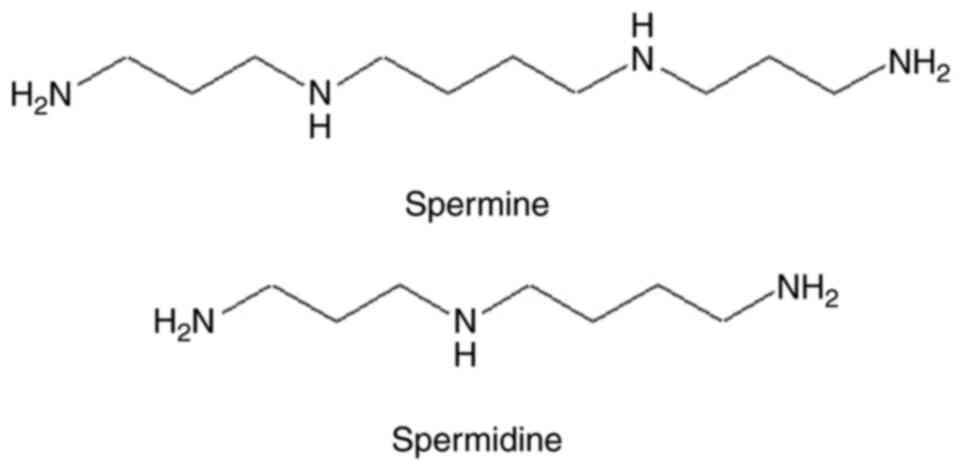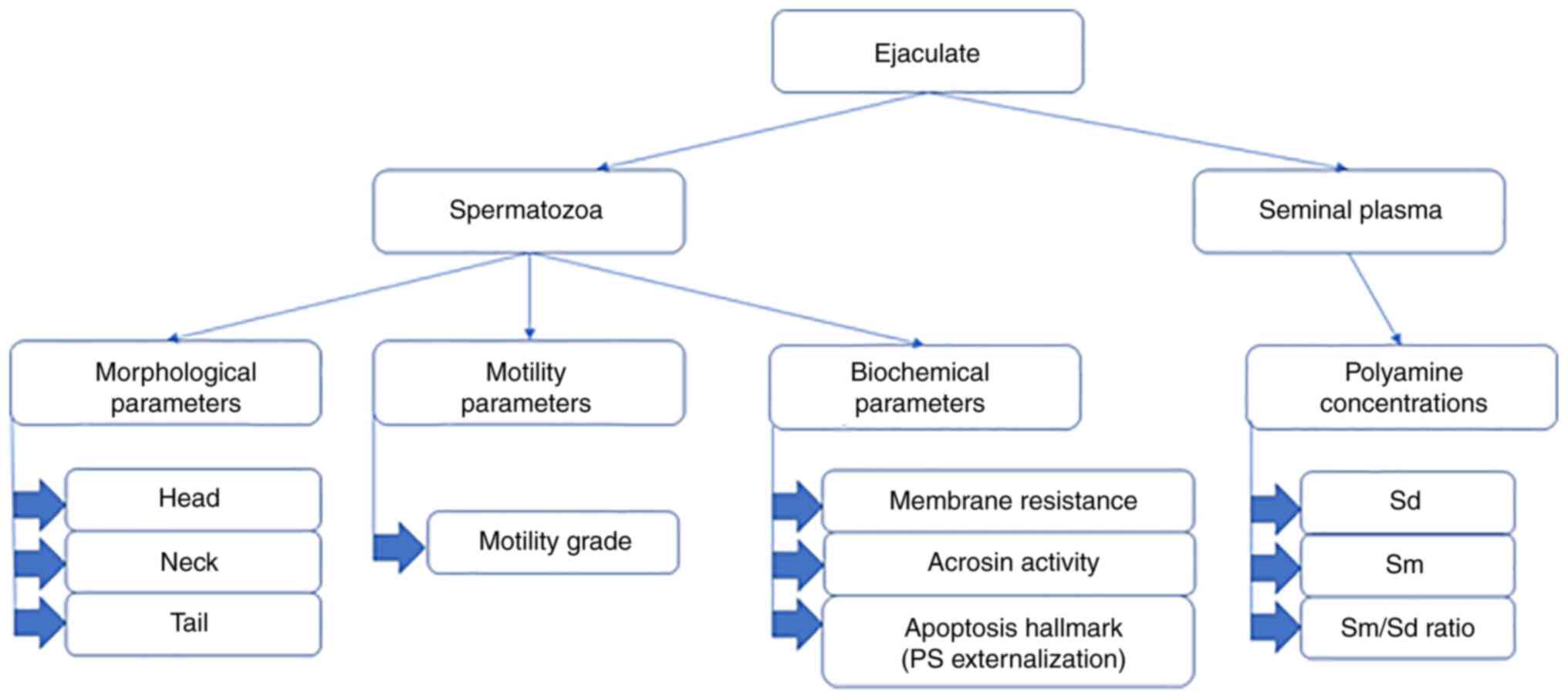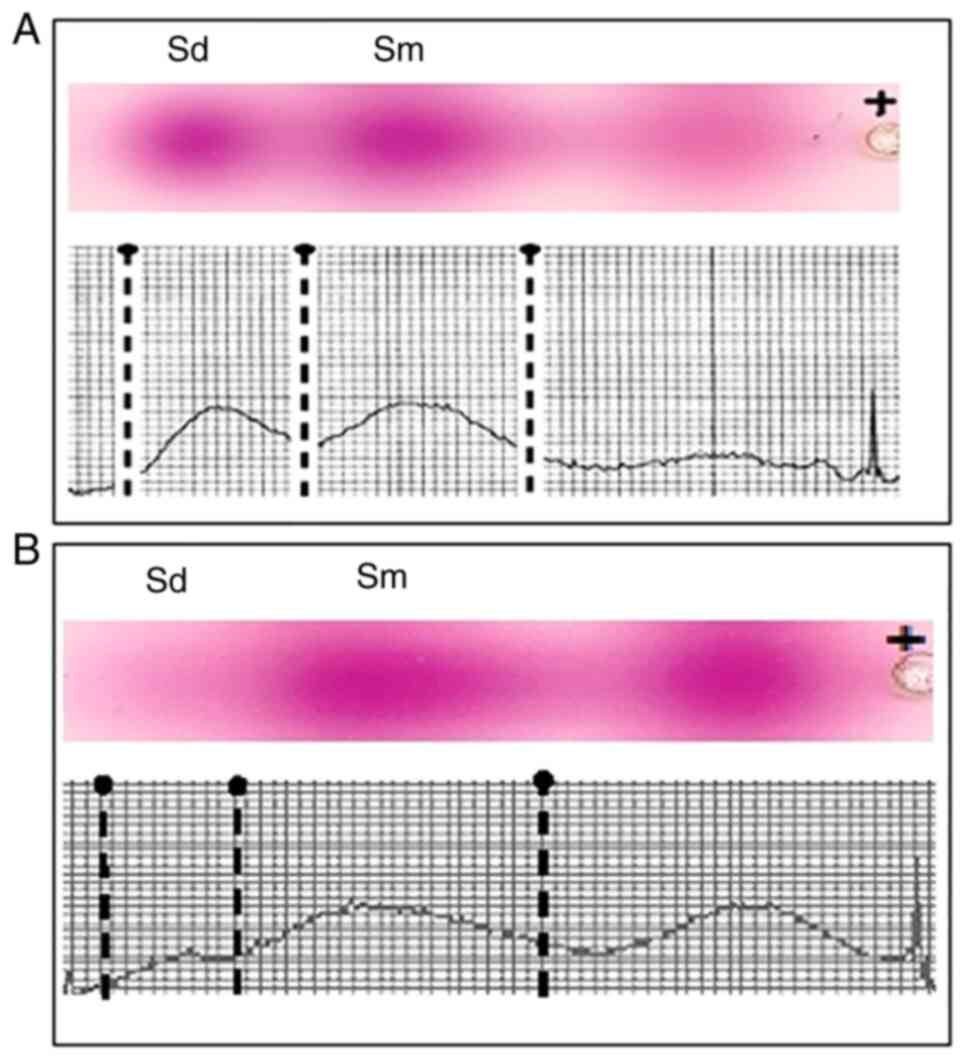|
1
|
Thackston KA, Deheyn DD and Sievenpiper
DF: Limitations on electromagnetic communication by vibrational
resonances in biological systems. Phys Rev E.
101(062401)2020.PubMed/NCBI View Article : Google Scholar
|
|
2
|
Ziskin MC: Millimeter waves: acoustic and
electromagnetic. Bioelectromagnetics. 34:3–14. 2013.PubMed/NCBI View Article : Google Scholar
|
|
3
|
Subbotina TI, Tereshkina OV, Khadartsev AA
and Yashin AA: Effect of low-intensity extremely high frequency
radiation on reproductive function in wistar rats. Bull Exp Biol
Med. 142:189–190. 2006.PubMed/NCBI View Article : Google Scholar : (In English,
Russian).
|
|
4
|
Nikoghosyan А, Heqimyan А and Ayrapetyan
S: Non-thermal microwave radiation-induced brain tissue dehydration
as a potential factor for brain functional impairment. Int J Basic
Appl Sci. 5:188–195. 2016.
|
|
5
|
Betskii OV, Devyatkov ND and Kislov VV:
Low intensity millimeter waves in medicine and biology. Crit Rev
Biomed Eng. 28:247–268. 2000.PubMed/NCBI View Article : Google Scholar
|
|
6
|
Tambiev AK and Kirikova NN: Novel concepts
of the causes of EHF-radiation-induced stimulating effects. Crit
Rev Biomed Eng. 28:60–76. 2000.PubMed/NCBI View Article : Google Scholar
|
|
7
|
Iryanov YM and Kiryanov NA: Reparative
osteogenesis and angiogenesis in low intensity electromagnetic
radiation of ultra-high frequency. Vestn Ross Akad Med Nauk.
70:334–340. 2015.PubMed/NCBI View Article : Google Scholar : (In Russian).
|
|
8
|
Bae DH, Lane DJR, Jansson PJ and
Richardson DR: The old and new biochemistry of polyamines. Biochim
Biophys Acta Gen Subj. 1862:2053–2068. 2018.PubMed/NCBI View Article : Google Scholar
|
|
9
|
Igarashi K and Kashiwagi K: The functional
role of polyamines in eukaryotic cells. Int J Biochem Cell Biol.
107:104–115. 2019.PubMed/NCBI View Article : Google Scholar
|
|
10
|
Ploskonos MV, Zulbalaeva DF, Kurbangalieva
NR and Ripp SV: Laboratory assessment of sperm apoptosis ability in
men with different fertility. The problems of reproduction.
26:77–84. 2020.
|
|
11
|
Hilal A, Ploskonos MV, Terentyev AA,
Syatkin SP, Neborak EV, Blagonravov ML, Protasov A, Kaitova Z and
Chibisov SM: Regulation of apoptosis of human immunocompetent cells
under the effect of polyamines. FEBS Open Bio. 8: (Suppl
1)(234)2018.
|
|
12
|
Fratini E, Cervelli M, Mariottini P,
Kanamori Y, Amendola R and Agostinelli E: Link between spermine
oxidase and apoptosis antagonizing transcription factor: A new
pathway in neuroblastoma. Int J Oncol. 55:1149–1156.
2019.PubMed/NCBI View Article : Google Scholar
|
|
13
|
Ploskonos MV, Syatkin SP, Neborak EV,
Hilal A, Sungrapova KY, Sokuyev RI, Blagonravov ML, Korshunova AY
and Terentyev AA: Polyamine analogues of propanediamine series
inhibit prostate tumor cell growth and activate the polyamine
catabolic pathway. Anticancer Research. 40:1437–1441.
2020.PubMed/NCBI View Article : Google Scholar
|
|
14
|
Ploskonos MV and Evdokimov VV: Polyamines
of urogenital tract men as factors of apoptosis regulation
spermatozoids. Urologiia. 4:74–79. 2019.PubMed/NCBI(In Russian).
|
|
15
|
Madeo F, Eisenberg T, Pietrocola F and
Kroemer G: Spermidine in health and disease. Science.
359(eaan2788)2018.PubMed/NCBI View Article : Google Scholar
|
|
16
|
Ozer Kaya S, Gur S, Erisir M, Kandemir FM,
Benzer F, Kaya E, Turk G and Sonmez M: Influence of vitamin E and
vitamin E-selenium combination on arginase activity, nitric oxide
level and some spermatological properties in ram semen. Reprod
Domest Anim. 55:162–169. 2020.PubMed/NCBI View Article : Google Scholar
|
|
17
|
Gapeev AB, Shved DM, Mikhaĭlik EN,
Korystov IuN, Levitman MKh, Shaposhnikova VV, Sadovnikov VB,
Alekhin AI, Goncharov NG and Chemeris NK: Antitumor effect of
low-intensity extremely high-frequency electromagnetic radiation on
a model of solid Ehrlich carcinoma. Biofizika. 54:1128–1136.
2009.PubMed/NCBI(In Russian).
|
|
18
|
World Medical Association. World Medical
Association Declaration of Helsinki: Ethical principles for medical
research involving human subjects. JAMA. 310:2191–2194.
2013.PubMed/NCBI View Article : Google Scholar
|
|
19
|
Korolev YN, Bobrovnitskii IP, Geniatulina
MS, Nikulina LA and Mikhailik LV: The ultrastructure of Sertoli
cells and spermatogonia in the rats exposed to radiation under
conditions of therapeutic and prophylactic application of
low-intensity electromagnetic emission. Vopr Kurortol Fizioter Lech
Fiz Kult. 95:35–40. 2018.PubMed/NCBI View Article : Google Scholar : (In Russian).
|
|
20
|
Korolev YN, Bragina EE, Nikulina LA and
Mikhailik LV: Action features of the of low-intensity
electromagnetic radiation at an early stage of the experimental
metabolic syndrome development induced by a diet high in
carbohydrates and fats. Vopr Kurortol Fizioter Lech Fiz Kult.
98:47–52. 2021.PubMed/NCBI View Article : Google Scholar : (In Russian).
|
|
21
|
Cooper TG, Noonan E, von Eckardstein S,
Auger J, Baker HW, Behre HM, Haugen TB, Kruger T, Wang C, Mbizvo MT
and Vogelsong KM: World Health Organization reference values for
human semen characteristics. Hum Reprod Update. 16:231–245.
2010.PubMed/NCBI View Article : Google Scholar
|
|
22
|
World Health Organization (WHO): WHO
laboratory manual for the examination and processing of human
semen. Vol 270. 5th edition. WHO, Geneva, 2010.
|
|
23
|
Dolgov VV, Lugovskaya SA and Fanchenko ND:
Laboratory diagnostics of male infertility: issued by the
Department of СLD, Moscow, p.145, 2006 (in Russian).
|
|
24
|
Schill WB: Acrosin activity in human
spermatozoa: Methodological investigations. Arch Dermatol Forsch.
248:257–273. 1973.PubMed/NCBI View Article : Google Scholar
|
|
25
|
Zahn A, Furlong LI, Biancotti JC,
Ghiringhelli PD, Marijn-Briggiler CI and Vazquez-Levin MH:
Evaluation of the proacrosin/acrosin system and its mechanism of
activation in human sperm extracts. J Reprod Immunol. 54:43–63.
2002.PubMed/NCBI View Article : Google Scholar
|
|
26
|
Song J, Shan Z, Mao J and Teng W: Serum
polyamine metabolic profile in autoimmune thyroid disease patients.
Clin Endocrinology. 90:727–736. 2019.PubMed/NCBI View Article : Google Scholar
|
|
27
|
Shohat B, Maayan R, Singer R, Sagiv M,
Kaufman H and Zukerman Z: Immunosuppressive activity and polyamine
levels of seminal plasma in azo-ospermic, oligospermic, and
normospermic men. Arch Androl. 24:41–50. 1990.PubMed/NCBI View Article : Google Scholar
|
|
28
|
Fair WR, Clark RB and Wehner N: A
correlation of seminal polyamine levels and semen analysis in the
human. Fertil Steril. 23:38–42. 1972.PubMed/NCBI View Article : Google Scholar
|
|
29
|
Shah GV, Sheth AR, Mugatwala PP and Rao
SS: Effect of spermine on adenyl cyclase activity of spermatozoa.
Experientia. 31:631–632. 1975.PubMed/NCBI View Article : Google Scholar
|
|
30
|
Rubinstein S and Breitbart H: Cellular
localization of polyamines: Cytochemical and ultrastructural
methods providing new clues to polyamine function in ram
spermatozoa. Biol Cell. 81:177–183. 1994.PubMed/NCBI View Article : Google Scholar
|
|
31
|
Benavides MP, Groppa MD, Recalde L and
Verstraeten SV: Effects of polyamines on cadmium- and
copper-mediated alterations in wheat (Triticum aestivum L) and
sunflower (Helianthus annuus L) seedling membrane fluidity. Arch
Biochem Biophys. 654:27–39. 2018.PubMed/NCBI View Article : Google Scholar
|
|
32
|
Lefèvre PL, Palin MF and Murphy BD:
Polyamines on the reproductive landscape. Endocr Rev. 32:694–712.
2011.PubMed/NCBI View Article : Google Scholar
|
|
33
|
Lundy SD, Sangwan N, Parekh NV, Selvam
MKP, Gupta S, McCaffrey P, Bessoff K, Vala A, Agarwal A, Sabanegh
ES, et al: Functional and taxonomic dysbiosis of the gut, urine,
and semen microbiomes in male infertility. Eur Urol. 79:826–836.
2021.PubMed/NCBI View Article : Google Scholar
|
|
34
|
Ivanov IP, Rohrwasser A, Terreros DA,
Gesteland RF and Atkins JF: Discovery of a spermatogenesis
stage-specific ornithine decarboxylase antizyme: Antizyme 3. Proc
Natl Acad Sci USA. 97:4808–4813. 2000.PubMed/NCBI View Article : Google Scholar
|
|
35
|
Korzun IA, Ploskonos MV, Syatkin SP,
Blagonravov ML, Gushchina YuSh, Eremina IZ, Kaitova ZS, Navid MN
and Aissa AA: Components of seminal plasma as factors regulating
apoptosis of male gametes. FEBS Open Bio. 9 (Suppl 1)(370)2019.
|
|
36
|
Hilal A, Ploskonos MV, Syatkin SP, Neborak
EV, Maksimova TV and Terentev AA: Apoptosis markers of
spermatozoids and polyamines of human spermoplasm. FEBS Open Bio. 9
(Suppl 1)(165)2019.PubMed/NCBI
|
|
37
|
Agostinelli E: Biochemical and
pathophysiological properties of polyamines. Amino Acids.
52:111–117. 2020.PubMed/NCBI View Article : Google Scholar
|
|
38
|
Bekebrede AF, Keijer J, Gerrits WJJ and
Boer VCJ: The molecular and physiological effects of
protein-derived polyamines in the intestine. Nutrients.
12(197)2020.PubMed/NCBI View Article : Google Scholar
|
|
39
|
Hussain T, Tan B, Ren W, Rahu N, Dad R,
Kalhoro DH and Yin Y: Polyamines: Therapeutic perspectives in
oxidative stress and inflammatory diseases. Amino Acids.
49:1457–1468. 2017.PubMed/NCBI View Article : Google Scholar
|
|
40
|
Syatkin SP, Kirichuk AA, Soldatenkov AT,
Kutyakov SV, Neborak EV, Shevkun NA, Kuznetsova OM, Skorik AS and
Terent'ev AA: Screening of some dioxaboreninopyridine and aniline
derivatives for carcinogenic properties using a model cell-free
system of regenerating rat liver. Bull Exp Biol Med. 162:801–807.
2017.PubMed/NCBI View Article : Google Scholar
|
|
41
|
Syatkin SP, Neborak EV, Khlebnikov AI,
Komarova MV, Shevkun NA, Kravtsov EG, Blagonravov ML and
Agostinelli E: The investigation of structure-activity relationship
of polyamine-targeted synthetic compounds from different chemical
groups. Amino Acids. 52:199–211. 2020.PubMed/NCBI View Article : Google Scholar
|
|
42
|
Zhao R, Liu Y, Liu S, Luo T, Zhong GY, Liu
A, Zeng Q and Xin SX: Apoptosis-promoting effects on A375 human
melanoma cells induced by exposure to 35.2-GHz millimeter wave.
Technol Cancer Res Treat. 19(1533033820934131)2020.PubMed/NCBI View Article : Google Scholar
|
|
43
|
Jänne J, Hölttä E, Haaranen P and Elfving
K: Polyamines and polyamine-metabolizing enzyme activities in human
semen. Clin Chim Acta. 48:393–401. 1973.PubMed/NCBI View Article : Google Scholar
|

















